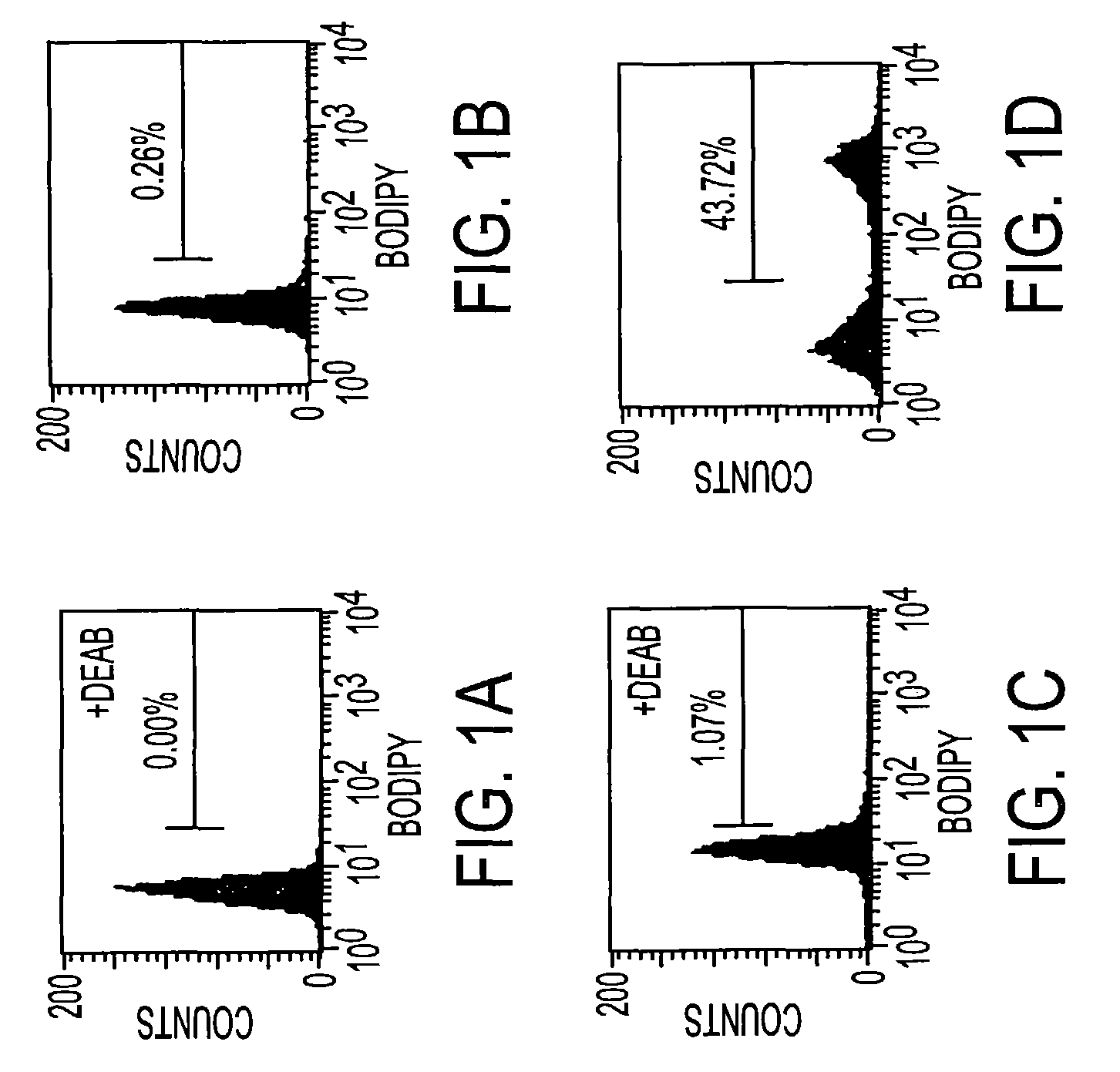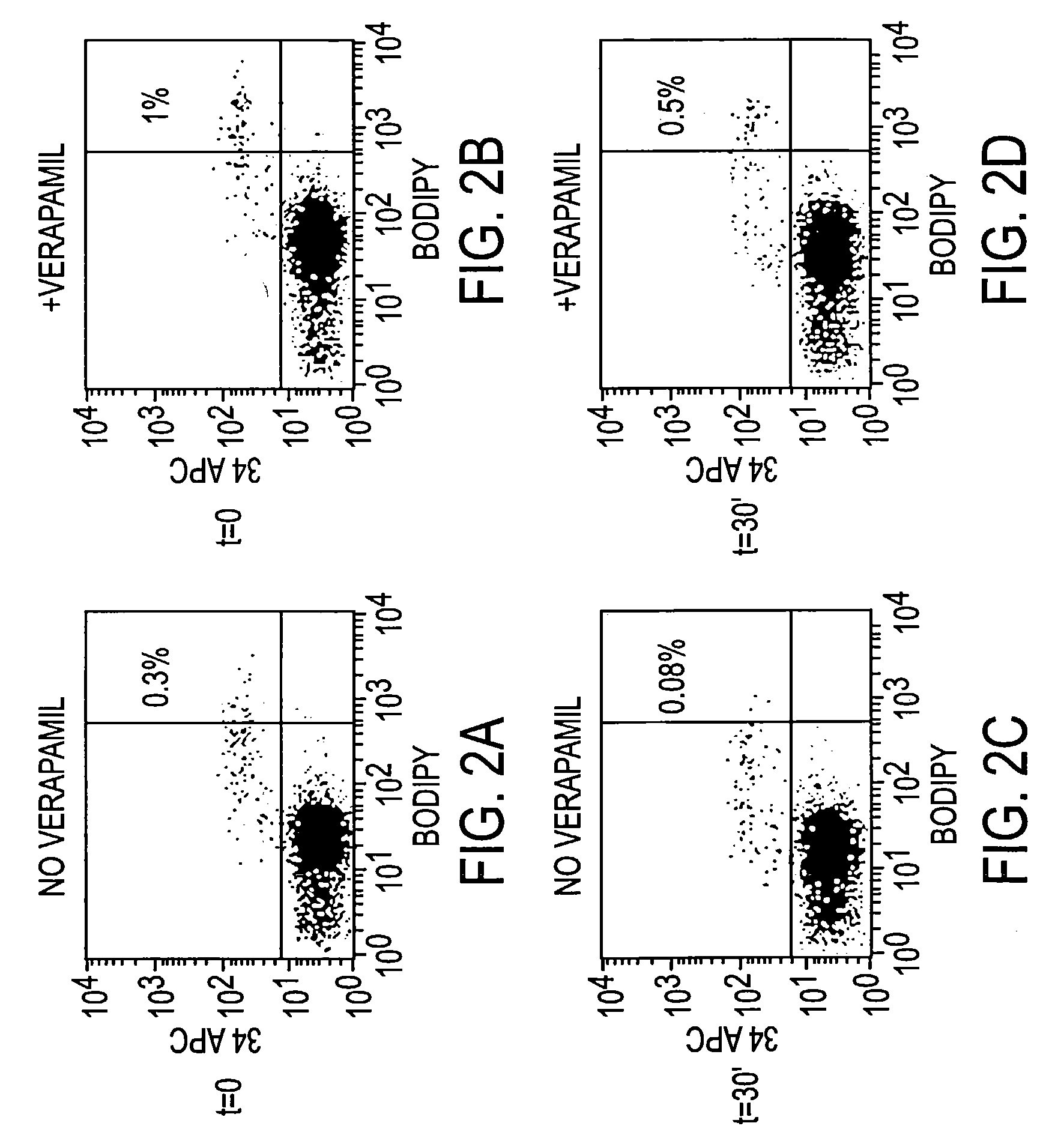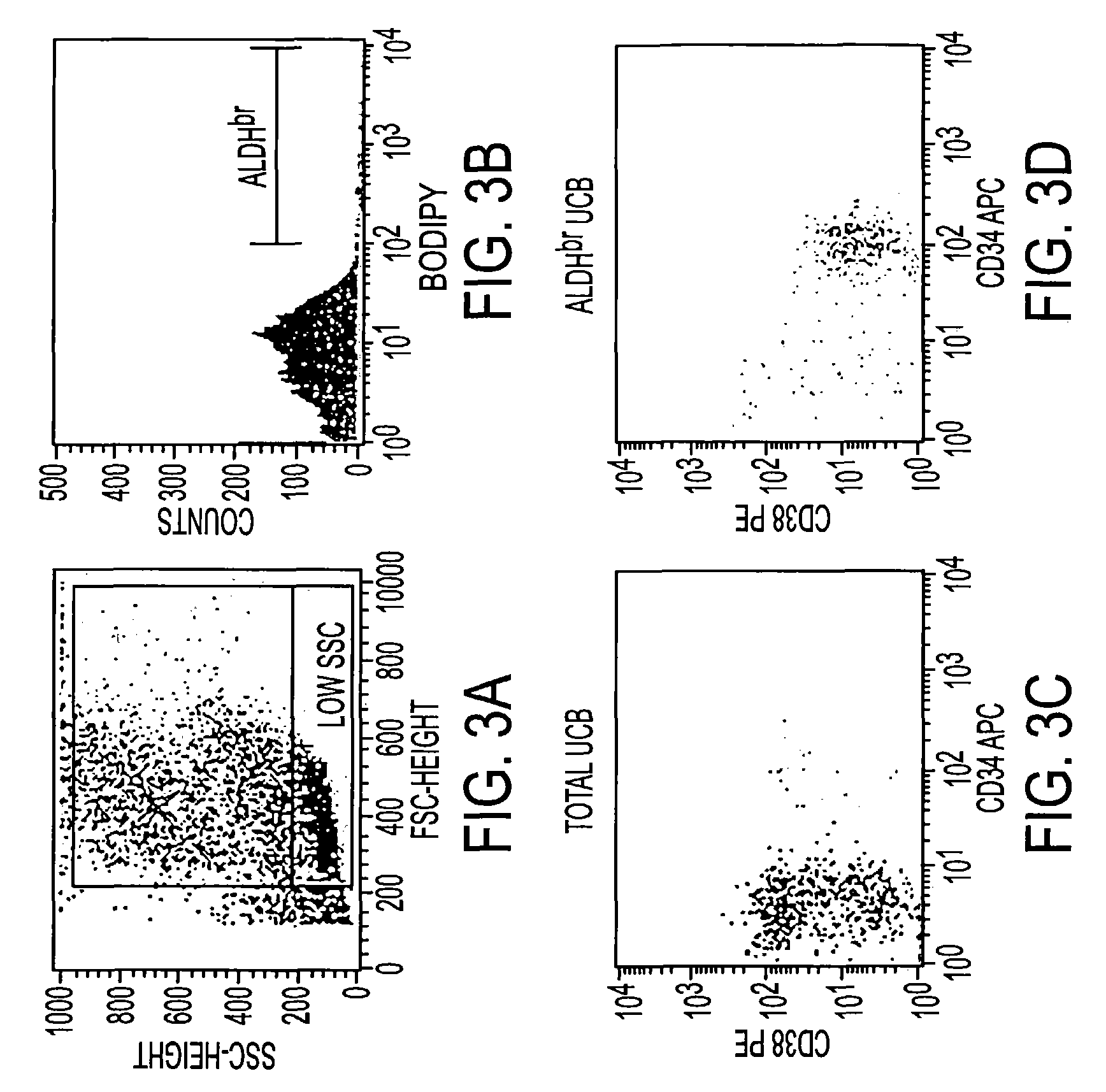Method of isolating stem cells
a stem cell and isolating technology, applied in the field of stem cells, can solve the problem of unusable preparations of reagents, and achieve the effect of reducing the efflux converted of substrates and high aldh activity
- Summary
- Abstract
- Description
- Claims
- Application Information
AI Technical Summary
Benefits of technology
Problems solved by technology
Method used
Image
Examples
example 1
Experimental Procedures
Preparation of BODIPY Aminoacetaldehyde Diethyl Acetal
[0032]The aldehyde dehydrogenase substrate is prepared as BODIPY aminoacetaldehyde diethyl acetal and lyophilized in 0.5 micromole aliquots. These preparations are stable indefinitely when stored at −20° C. The acetal is then solubilized in DMSO to a final concentration of 5 mM. This solution has been found to be stable at 4° C. for up to 1 week. To convert the acetal to an acetaldehyde, aliquots of this solution are brought to a final concentration of 1 N HCl. Under these conditions the acetal has a half life of 15 minutes. After 2 hours in 1 N HCl, the vast majority of the BODIPY aminoacetaldehyde diethyl acetal has converted to BODIPY aminoacetaldehyde (BAAA), and is then diluted to 200–250 mM in Dulbecco's phosphate buffered saline (PBS). This stock is added directly to cells prepared in Iscove's Modified Dulbecco's Medium (IMDM) with 2% FCS at concentrations ranging from 1 to 5 μM.)(See also FIG. 6.).
A...
example 2
[0051]ALDHbr UCB cells have been shown to be predominately CD34+CD38− / lo and highly enriched for early myeloid progenitors. The current study was undertaken to determine whether the ALDHbr CD34+ UCB cells were enriched for lymphoid progenitors as well. In 3 experiments, cultures or ALDHbr CD34− UCB cells were established on AFT024 stromal cells in the presence on Kit ligand, Flt3 ligand, IL-3 (1st day only), IL-2 and IL-7 at various dilutions. After 7-8 weeks, the cultures were analyzed for lymphocyte growth as determined by expression of CD56, CD10, CD19 or CD20.
[0052]
TABLE 1ALDHbrtotal wellswells withlymphocyte*cells / wellinitiatedviable cellswells1000 6 5 5250 161212624840401648343410242017
[0053]The AFT024 cultures primarily favored the growth of presumptive NK cells, so to more effectively test whether ALDHbr CD34+ UCB cells contained B-lymphoid progenitors, they were cultured on the W20 stromal cell line supplemented with the same cytokine combination. Of 12 cultures establishe...
PUM
| Property | Measurement | Unit |
|---|---|---|
| pH | aaaaa | aaaaa |
| concentration | aaaaa | aaaaa |
| multiple drug resistance | aaaaa | aaaaa |
Abstract
Description
Claims
Application Information
 Login to View More
Login to View More - R&D
- Intellectual Property
- Life Sciences
- Materials
- Tech Scout
- Unparalleled Data Quality
- Higher Quality Content
- 60% Fewer Hallucinations
Browse by: Latest US Patents, China's latest patents, Technical Efficacy Thesaurus, Application Domain, Technology Topic, Popular Technical Reports.
© 2025 PatSnap. All rights reserved.Legal|Privacy policy|Modern Slavery Act Transparency Statement|Sitemap|About US| Contact US: help@patsnap.com



